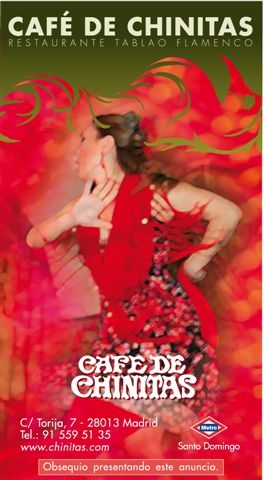Tablao on:
[Wikipedia]
[Google]
[Amazon]
 A tablao (colloquial term for the Spanish "tablado", floorboard) is a place where
A tablao (colloquial term for the Spanish "tablado", floorboard) is a place where
Tablaos in Spain
Flamenco {{dance-stub
 A tablao (colloquial term for the Spanish "tablado", floorboard) is a place where
A tablao (colloquial term for the Spanish "tablado", floorboard) is a place where flamenco
Flamenco (), in its strictest sense, is an art form based on the various folkloric music traditions of southern Spain, developed within the gitano subculture of the region of Andalusia, and also having historical presence in Extremadura and ...
shows are performed and also tablao is the term used for the platform floor in which a flamenco dancer dances. Tablao venues were developed during the 1960s throughout Spain replacing the cafés cantantes (cabaret
Cabaret is a form of theatrical entertainment featuring music, song, dance, recitation, or drama. The performance venue might be a pub, a casino, a hotel, a restaurant, or a nightclub with a stage for performances. The audience, often dining or d ...
s).
About
Tablao are mostly found inAndalusia
Andalusia (, ; es, Andalucía ) is the southernmost Autonomous communities of Spain, autonomous community in Peninsular Spain. It is the most populous and the second-largest autonomous community in the country. It is officially recognised as a ...
, often along the coast or in larger cities. In Granada
Granada (,, DIN 31635, DIN: ; grc, Ἐλιβύργη, Elibýrgē; la, Illiberis or . ) is the capital city of the province of Granada, in the autonomous communities of Spain, autonomous community of Andalusia, Spain. Granada is located at the fo ...
, the Sacromonte caves or "gypsy flamenco caves" (zambras) are located along Cuesta de Chapiz.
Tablaos tend to be decorated in a typically Spanish way with embroidered silk shawls, photographs of famous people, bullfighting clothes and capes. At a tablao they often serve drinks, they may offer samples of tapas, or dining on a full Spanish meal. The pricing structure of a tablao can be confusing and expensive, this varies by location and can be depending on if there is an entrance fee.
Earlier history and café cantantes
The first "cafe cantantes" was named Café sin Nobre (No Name Cafe) and was opened in 1842 in Seville, Spain by flamenco singer Silvio Franconetti. These cafes were night bars with flamencoentertainment
Entertainment is a form of activity that holds the attention and interest of an audience or gives pleasure and delight. It can be an idea or a task, but is more likely to be one of the activities or events that have developed over thousa ...
, and where in addition to serving drinks, offered performances of singing, playing and dancing. It was from the creation of these cafe cantantes bars that flamenco became more popular and the emergence of the professional flamenco performer.
The cafés cantantes peaked from mid-19th century and well into the second decade of the 20th century, however there was decline of "pure flamenco" style. With increased popularity, flamenco spread to other regions and the entertainment venue structure changed with it and new styles of flamenco developed. The "cafés cantantes" used to have a consistent decorative style: walls decorated with bullfighting
Bullfighting is a physical contest that involves a bullfighter attempting to subdue, immobilize, or kill a bull, usually according to a set of rules, guidelines, or cultural expectations.
There are several variations, including some forms wh ...
posters and mirrors in a large room with tables, and at the back which was the tablao where artists offer their shows.
References
External links
Tablaos in Spain
Flamenco {{dance-stub